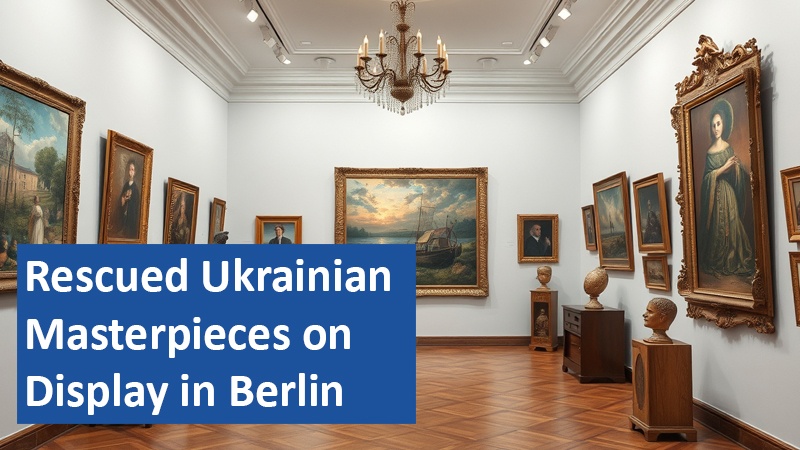
Ukrainian artworks from war-torn Odesa have found a safe haven in Berlin. Following an extensive rescue and restoration effort, 60 valuable paintings from the Odesa Museum of Western and Eastern Art are now on display. The collaboration between Ukrainian and German museums sends a powerful message about the importance of preserving cultural heritage.
Limited-time Amazon deals – don’t miss out!
A Museum Under Attack
Since the beginning of the war in Ukraine, numerous cultural treasures have been at risk of destruction. Odesa, in particular, has suffered repeated attacks on its historic buildings and museums. In response, the Odesa Museum of Western and Eastern Art took swift action, securing many of its priceless exhibits soon after the invasion. By 2023, 74 paintings had been transported to Germany to prevent further damage.
Preserving and Restoring Artworks
Upon arrival in Berlin, the paintings underwent extensive restoration at the Gemäldegalerie. Many of the artworks had deteriorated due to poor storage conditions in Lviv, where overcrowded depots exposed them to humidity and potential mold. German conservators meticulously cleaned the pieces and provided them with new frames, ensuring they could be properly displayed in the exhibition “From Odesa to Berlin.”
A Symbol of Solidarity
The exhibition showcases 60 key works of European painting from the 16th to 19th centuries, featuring artists such as Bernardo Strozzi, Frans Hals, and Cornelis de Heem. These are complemented by 25 pieces from Berlin’s own collection.
More than just an artistic presentation, the exhibition serves as a strong political statement. Director Dagmar Hirschfelder emphasized that the display is an “important sign of solidarity” in light of the deliberate destruction of Ukrainian cultural heritage.
Art as a Testament to Resilience
This exhibition highlights the role of international cooperation in preserving cultural heritage during times of war. German President Frank-Walter Steinmeier expressed his hope that many people would visit the exhibit and that displaced Ukrainians in Germany would find a sense of home in these paintings. Odesa Museum Director Igor Poronyk summed up the enduring power of art: “Evil is fleeting, but art lasts forever.”
The Berlin exhibition is a testament to how cultural heritage can be safeguarded even in times of war. Through international collaboration, invaluable artworks have been saved from destruction and made accessible to the public. The hope remains that these pieces will one day return to a peaceful and independent Ukraine.
How can global institutions better protect endangered artworks? Share your thoughts in the comments!
Based on content from www.smithsonianmag.com and own research.